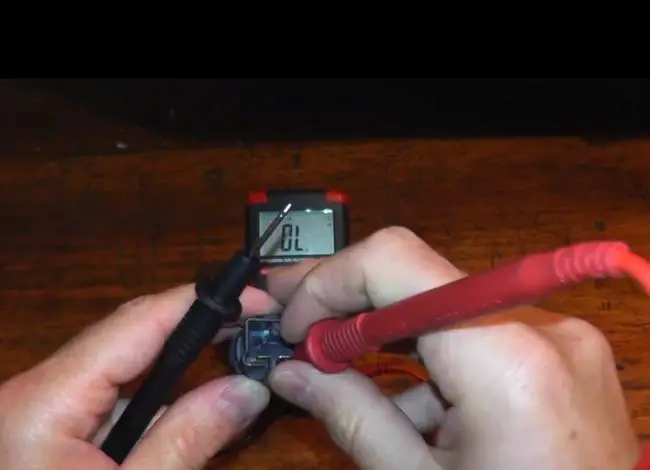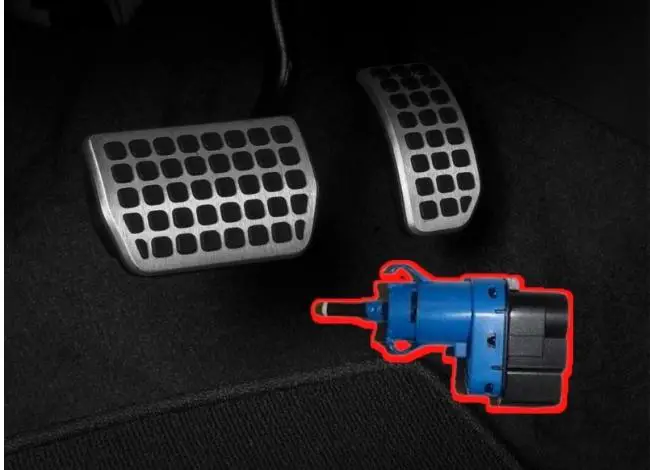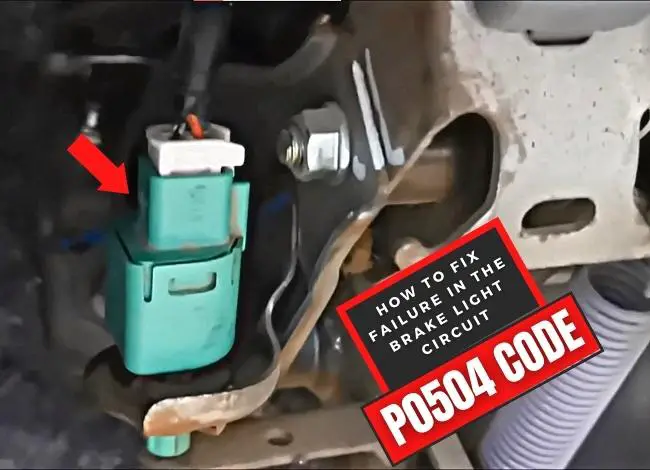Last Updated on April 22, 2025
If your vehicle’s check engine light has come on and you’re seeing the P0341 code, it’s time to pay attention. This diagnostic trouble code (DTC) relates to the camshaft position sensor (CMP) and its signal to the engine control module (ECM). In simple terms, this code means the signal from the camshaft sensor is either out of range or inconsistent, potentially causing engine misfires, rough idling, or even stalling.
Understanding the P0341 code meaning, identifying its common causes, and knowing how to fix it can save you time, money, and frustration. In this guide, we’ll cover everything you need to know about the P0341 camshaft position sensor error and how to troubleshoot and resolve it effectively.
What Is P0341 Code?
OBD-II Code P0341 stands for:
“Camshaft Position Sensor ‘A’ Circuit Range/Performance (Bank 1 or Single Sensor)”
This means the ECM has detected a problem with the performance or range of the camshaft position sensor signal. The signal might not match the expected timing with the crankshaft sensor, resulting in this DTC being logged.
The camshaft position sensor plays a crucial role in engine timing, as it helps the ECM determine the position of the camshaft to adjust fuel injection and ignition timing precisely.
Symptoms of the P0341 Code
When the P0341 code is triggered, the vehicle often shows the following symptoms:
- Check engine light is illuminated
- Engine misfires
- Rough idling
- Difficulty starting the engine
- Reduced fuel efficiency
- Loss of power during acceleration
- Engine stalling or hesitation
If you’re experiencing any of these issues, it’s crucial to diagnose and fix the camshaft position sensor P0341 problem promptly to avoid engine damage.
Common Causes of the P0341 Error Code
The P0341 trouble code can be triggered by a variety of underlying issues. Here are the most common causes:
- Faulty camshaft position sensor
- Wiring issues, such as damaged wires, loose connectors, or poor grounds
- Defective crankshaft position sensor
- Timing chain or belt problems, including slippage or stretch
- ECM (engine control module) failure or software glitches
- Oil contamination on the sensor
- Weak or discharged battery
- Aftermarket or incompatible parts interfering with timing signals
It’s worth noting that this code may not always point to a sensor fault. Sometimes, it’s a wiring or timing issue instead.
How to Diagnose the P0341 Code (Step-by-Step)
Diagnosing the P0341 Camshaft Position Sensor “A” Circuit Range/Performance (Bank 1) code involves a methodical approach using both visual inspections and electrical testing. Accurate diagnosis is critical, as misdiagnosing can lead to unnecessary sensor replacements or costly repairs.
Here’s a comprehensive, step-by-step diagnostic guide:
Step 1: Confirm the P0341 Code Using an OBD-II Scanner
- Connect a professional OBD2 scanner to the vehicle’s diagnostic port, usually located under the dashboard.
- Read the trouble codes and confirm that P0341 is present.
- Take note of any accompanying codes, such as P0016, P0017, P0340, or P0365, which may indicate related timing or sensor correlation problems.
👉 Tip: Freeze frame data can help you determine the conditions under which the code was triggered, such as engine RPM, load, and temperature.
Step 2: Visually Inspect the Sensor and Wiring
- Open the hood and locate the Camshaft Position Sensor (CMP)—usually found near the top of the engine, often close to the timing cover or valve cover.
- Look for damaged wires, burnt insulation, corroded or loose connectors, and signs of oil contamination near the sensor or harness.
- Wiggle the connector while watching live sensor data to check for intermittent signal drops.
Step 3: Test the Vehicle’s Battery and Charging System
- Low voltage or charging issues can disrupt sensor signals. Use a multimeter to check the battery voltage:
- Should be 12.4V – 12.7V with the engine off
- Should be 13.7V – 14.7V while the engine is running
- Check for alternator issues or parasitic drains that may cause voltage dips.
Step 4: Inspect the Camshaft Sensor
- Unplug the CMP sensor and check resistance across its terminals using a multimeter.
- Compare the values to your vehicle’s repair manual specifications.
- If available, observe live sensor data with a scan tool to see if it reads RPM or camshaft rotation while cranking the engine.
👉 Important: Some sensors use a hall-effect signal, and others use a magnetic pickup, so the testing method may differ.
Step 5: Compare with Crankshaft Sensor Data
- The ECM cross-references camshaft and crankshaft position sensor signals to maintain accurate engine timing.
- If their signals don’t align, it could indicate:
- A slipped timing chain/belt
- Faulty crankshaft sensor
- Engine mechanical issues
- Use a scope or advanced scanner to monitor both sensor signals for synchronization.
Step 6: Check Engine Timing
- If you’ve ruled out electrical issues, you may have a mechanical timing problem.
- Remove timing covers (if accessible) and check that the camshaft and crankshaft timing marks are aligned.
- A stretched or slipped timing chain/belt can lead to out-of-sync sensor signals, triggering P0341.
Step 7: Check ECM Software and Updates
- In rare cases, ECM firmware issues or outdated software can misinterpret sensor signals.
- Check for Technical Service Bulletins (TSBs) from the vehicle manufacturer related to the P0341 code.
How to Fix the P0341 Code
Once you’ve diagnosed the underlying cause of the P0341 DTC, it’s time to implement the correct fix. Here’s a complete list of proven solutions, from quick DIY fixes to more advanced mechanical repairs.
1. Replace the Camshaft Position Sensor
- If the sensor is confirmed faulty through resistance or signal testing, replace it with an OEM-grade sensor.
- After installation, ensure the mounting position is secure, and connectors are tight.
- Avoid cheap aftermarket sensors, as inconsistent signal output can cause recurring issues.
⏱ Estimated time: 15–30 minutes
💲 Cost: $40 – $120 (part only)
2. Repair or Replace Damaged Wiring
- Cut and re-solder frayed wires, or use heat-shrink connectors for lasting repairs.
- Clean terminals with electrical contact cleaner, and apply dielectric grease to protect against moisture.
- Route wires away from hot or moving components to prevent future damage.
3. Clean the Sensor Area
- If oil or grime is present, remove the sensor and clean the mounting area thoroughly.
- Replace the sensor O-ring if damaged, and check for valve cover gasket leaks that may allow oil to seep onto the sensor.
4. Replace the Crankshaft Position Sensor (if necessary)
- If sensor comparison tests indicate an issue with the crankshaft position sensor, replace it to restore proper synchronization.
- This may also resolve codes like P0016 or P0017, often seen with P0341.
5. Re-time or Replace the Timing Chain/Belt
- If timing is off due to a stretched or slipped belt/chain, it needs to be re-timed or replaced.
- This is a mechanically intensive job and may require special tools.
- You’ll need to:
- Remove the timing cover
- Realign timing marks
- Replace tensioners or guides if worn
⏱ Estimated time: 4–8 hours
💲 Cost: $400 – $1000 (parts and labor)
6. Update or Reprogram the ECM
- Check for software updates or ECM reprogramming bulletins using your VIN on the manufacturer’s website.
- Some updates can resolve sensor misreading or synchronization issues.
💻 May require dealer tools or authorized repair shops.
7. Replace or Recharge the Battery
- If battery voltage drops too low during startup, it can cause sensor signal interruptions.
- Replace the battery if it fails a load test or won’t hold a charge.
8. Clear the Code and Test
- Once repairs are made, clear the code using an OBD-II scanner.
- Drive the vehicle for several cycles and monitor if the check engine light returns.
- Re-scan for codes to ensure no underlying issues remain.
Pro Tips:
- Always perform a test drive under real driving conditions before concluding repairs are complete.
- Don’t just replace the camshaft sensor without testing—it may not be the real issue.
- Use a repair manual specific to your vehicle for exact sensor locations, torque specs, and wire color codes.
Tools You Might Need
- OBD-II scanner
- Digital multimeter
- Socket set and screwdrivers
- Wiring diagram (from your vehicle’s repair manual)
- Timing light (for checking timing accuracy)
- Replacement sensors (OEM preferred)
Is It Safe to Drive with a P0341 Code?
Technically, the vehicle might still run with a P0341 code. However, driving with this issue for an extended period is not recommended. The timing issues can:
- Lead to poor performance
- Cause misfires that damage the catalytic converter
- Increase fuel consumption
- Result in engine stalling
Addressing the P0341 camshaft sensor issue quickly ensures engine longevity and safety.
Preventing the P0341 Error Code
Here are some simple tips to prevent this issue from reoccurring:
- Use OEM sensors and connectors
- Maintain your timing components
- Avoid oil leaks and clean up oil spills promptly
- Keep battery and charging system healthy
- Regularly inspect the sensor harness and connectors
Related Trouble Codes
You may also encounter these related codes:
Understanding these codes in relation to P0341 can help you diagnose broader timing and sensor issues.
Professional Repair Cost Estimates
If you opt for a professional mechanic to fix this code, here’s a rough cost breakdown:
| Service | Estimated Cost (USD) |
|---|---|
| Diagnostic Scan | $50 – $120 |
| Camshaft Sensor Replacement | $100 – $250 |
| Crankshaft Sensor Replacement | $100 – $200 |
| Timing Chain/Belt Adjustment/Repair | $300 – $900+ |
| ECM Reprogramming | $75 – $150 |
Prices vary by location and vehicle make/model.
FAQs About the P0341 Error Code
What is the most common cause of the P0341 code?
The most common cause is a faulty camshaft position sensor, but bad wiring or timing issues can also trigger it.
Can a bad battery cause P0341?
Yes. Low voltage from a failing battery can result in poor sensor signals and false error codes.
Will replacing the camshaft sensor fix P0341?
It might, but only if the sensor is the actual cause. Always perform proper diagnostics first.
Does the check engine light reset automatically after repair?
It can reset after several successful drive cycles, or you can use an OBD-II scanner to clear it manually.
How long does it take to fix a P0341 code?
If it’s just the sensor, it may take less than an hour. Timing issues may take several hours or even a full day.
Final Thoughts on Fixing Code P0341
The P0341 camshaft position sensor error should not be ignored. While it might seem like a minor issue at first, failing to address it can lead to reduced engine performance, higher fuel consumption, and potentially costly repairs.
By learning the meaning of P0341, understanding its symptoms, identifying causes, and following the step-by-step diagnosis and repair tips, you can restore your vehicle’s performance and reliability.
Always prioritize quality parts and proper diagnostics—and when in doubt, consult a professional technician.
Meet our professional car mechanic, Russell D. Steele, who has been in this field for five consecutive years and works with several automotive companies. He completed the "AUTOMOTIVE & LIGHT DUTY DIESEL TECHNOLOGY" course from NorthWest Lowa Community College, where he learned essential diagnostic and transportation management skills and became a certified mechanic.

